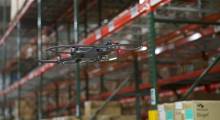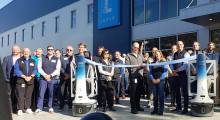“I’m shocked.”
Those were the first words out of my mouth when a reporter from the Boston Globe asked me last night what I thought of the purchase of Kiva Systems by Amazon for $775 million.
Twelve hours later, I’m still trying to wrap my head around the figure. That is not a reflection on what I think of Kiva. In many respects, it is a remarkable company. Mick Mountz, Kiva’s CEO, had a vision for a completely unique way of delivering a goods to person order fulfillment solution. Unlike a lot of new technology, Kiva works by all accounts. That is no small achievement.
Kiva’s reported revenue is no small achievement either. Although Kiva does not release sales figures, it has been reported in the Boston Globe and the Boston Business Journal that Kiva “is reportedly seeing more than $100 million in annual revenue, thanks in no small part to the growth of e-commerce (Kiva customers include Zappos, Crate & Barrel and Gap).”
Still, $775 million? That’s dot.com money. And while Kiva’s growth has been driven by direct to consumer order fulfillment, at the end of the day, Kiva is a materials handling company and not a dot.com. Someone will correct me if I’m wrong, but I venture to say that no materials handling company has ever generated that kind of multiple in a sale. Hopefully, a lot of that cash will go to Mountz and his employees rather than venture capitalists like Bain Capital Ventures, which funded Kiva. (Question: Did Mitt Romney’s net worth go up yesterday as a result of the Kiva sale?)
What then accounts for Amazon’s interest in Kiva? Kiva directed me to Amazon, which said in its press release that “Kiva shares our passion for invention, and we look forward to supporting their continued growth.”
My take. Going forward, I think Kiva has several important things in its favor.
One is robotics. While robots have been common in manufacturing for decades, they’re new to warehousing and distribution, where wages were historically much cheaper than a manufacturing plant. That may be changing and not because of rising wages. Rather it’s because warehouses are struggling to keep enough workers to do the job, especially during seasonal and holiday spikes in demand. Meanwhile, the cost of robotics has come down and the solutions have improved. This is still very much an emerging trend, but it’s a trend that works in Kiva’s favor.
Direct To Consumer: Retailers in particular are struggling with piece picking, whether they are filling direct to consumer orders or picking smaller and more frequent deliveries to retail stores. That has been exacerbated by the consumer demand for free shipping. Controlling operational costs associated with piece picking has opened up the market for goods to person order fulfillment solutions – whether they come from Kiva or a traditional materials handling automation supplier.
Despite that good news, I think Kiva and Amazon have several challenges.
Niche market: Yes, goods to person is a fast-growing market, but it’s still a niche market. Let’s face facts: the vast majority of warehouses are still paper-driven and store things on the floor or on pallets. I’m guessing the number crunchers at Amazon have a spreadsheet versus my guesstimate, but to reach Kiva’s reported target of a billion dollars a year in sales, I think they’d have to corner the goods to person market.
The materials handling industry is catching up: When Kiva first exhibited at ProMat five or six years ago, no one quite knew what to make of those little bots running around the booth. Many in the industry dismissed them until they started winning orders. Now, conventional materials handling automation suppliers have really upped their game when it comes to goods to person order fulfillment. What’s more, in many facilities, goods to person is one of several picking strategies and not the only picking strategy – especially as more companies look to develop multi-channel distribution centers. Vendors can argue over whether mobile robots are better than carousels, mini-loads, shuttles or tilt tray sorters to deliver goods to an order selector, but the truth is that in this industry there is no one size fits all solution that works for everyone.
We’ve seen this story before in this industry: A few years ago, 3M bought HighJump Software, a Minneapolis-based company that does software for warehousing, distribution and transportation. There was lots of talks about synergies and growth, right up to the time when 3M sold HighJump. Similarly, Siemens once owned Dematic – until they sold it to a VC. Kiva is a great company, but they’re annual revenue is barely a rounding error on Amazon’s $48 billion in 2011 sales. I hope they don’t get lost inside an organization as large as Amazon.
About the Author
Follow Robotics 24/7 on Linkedin
About the Author
Follow Robotics 24/7 on Linkedin
Article topics
Email Sign Up















